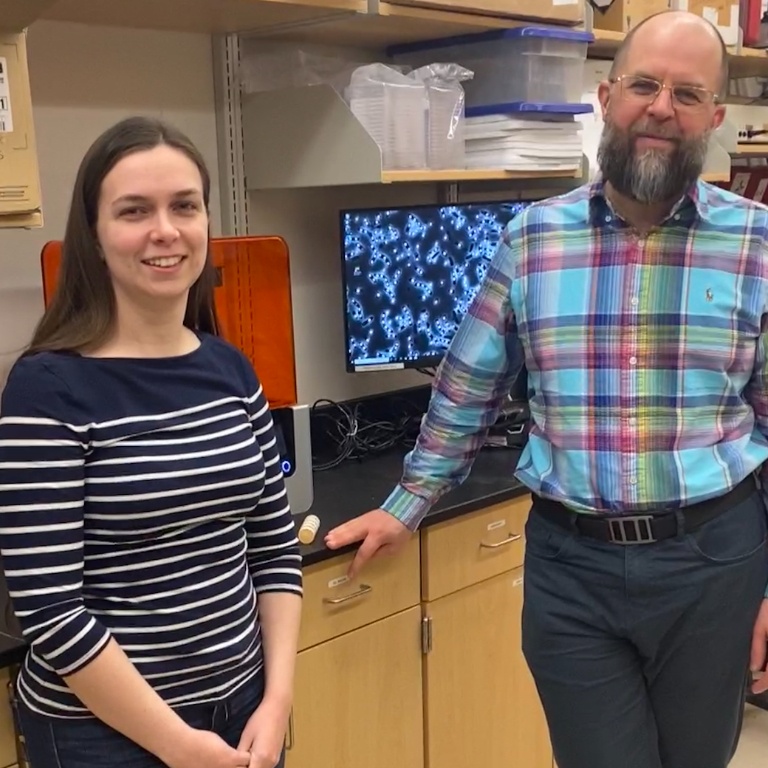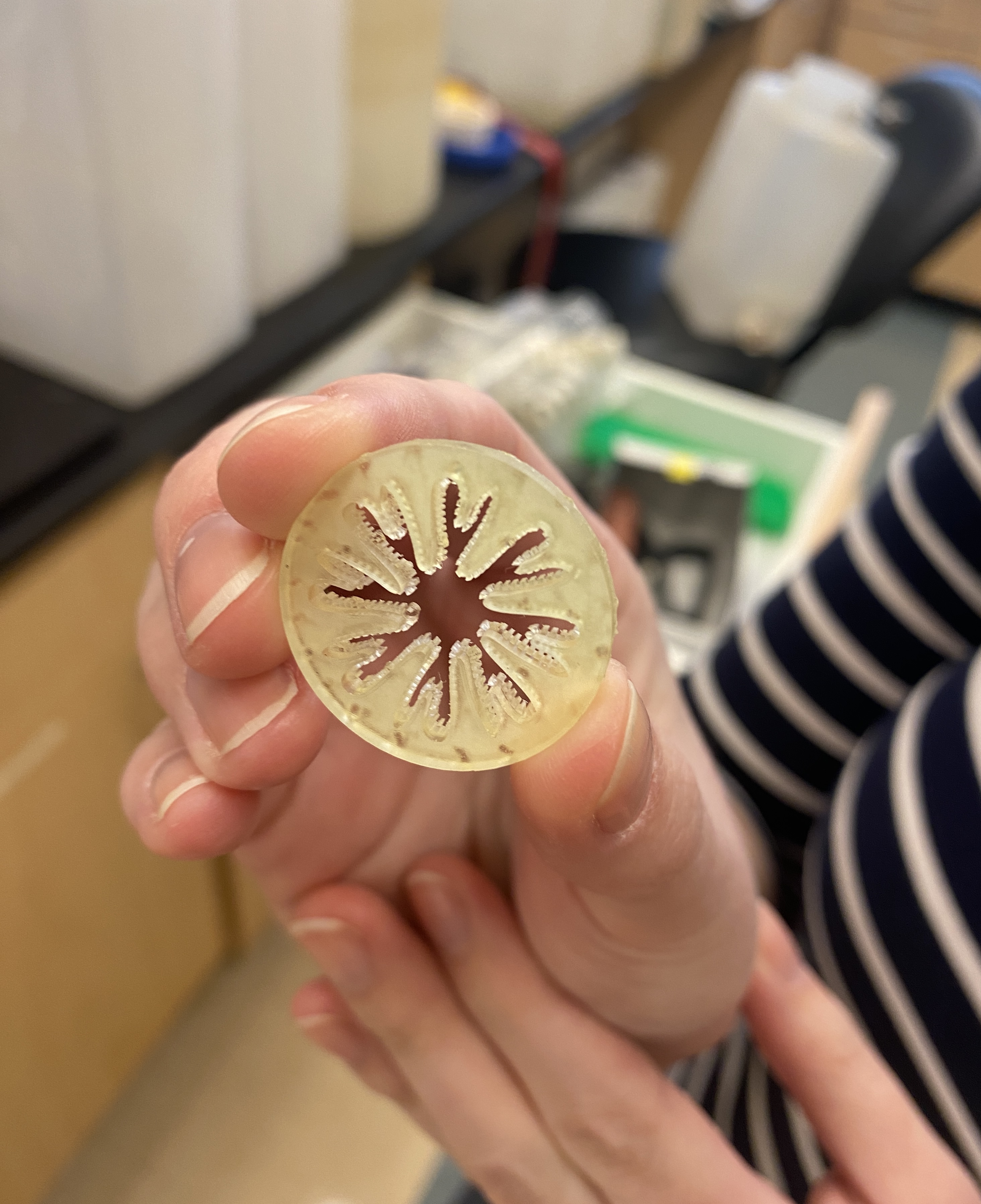To better understand the complexity and function of the gut microbiome – the ecosystem of microbes that live in your intestines – a team of Indiana University researchers designed a model to do so with far-reaching implications.
“There have been a lot of efforts over the years to come up with experimental ways to look at how the gut microbiome changes with diet and drugs,” said Emmi Mueller, a Ph.D. candidate in Evolution, Ecology, and Behavior in the Biology Department at IU Bloomington.
“And many of them not only miss the large-scale aspect of our gut but also its physical structure,” she said.
It took an interdisciplinary, collaborative approach to address the issue of scale and structure of the gut microbiome that included Mueller along with Jay Lennon, professor of biology in the IU College of Arts and Sciences, Alexander Gumennik, assistant professor of intelligent systems engineering in the IU Luddy School of Informatics, Computing and Engineering, and graduate student Louis van der Elst.
Mueller said, “Our goal was to create a gut model that allowed us to bridge those two pieces and create something that has the physical structure of the gut but also allows us to do wide-ranging experiments that are limited in other situations.”
The team of researchers recently developed a method for forming a gut bioreactor and was issued a patent from the U.S. Patent and Trademark Office.
Mueller said the collaboration started because she and Lennon had the idea and realized that they didn’t know how to design anything in 3D. It soon became an obvious collaboration between the two labs, “because we had the biology aspect, and they had the material science and 3D printing knowledge,” Mueller said.
The bioreactor is made of 3D-printed material that resembles tissue and microstructures of the mammalian GI tract, which enables the study of the complex features that are characteristic of the gut microbiome.


 The College of Arts
The College of Arts